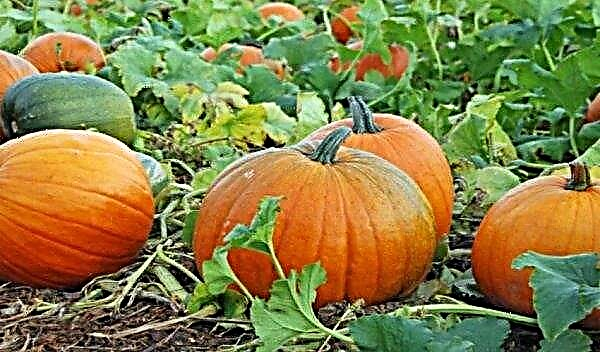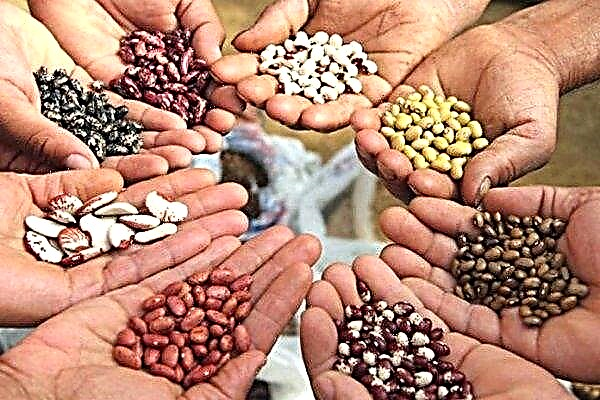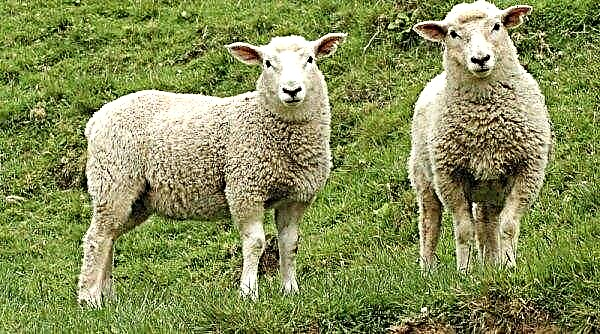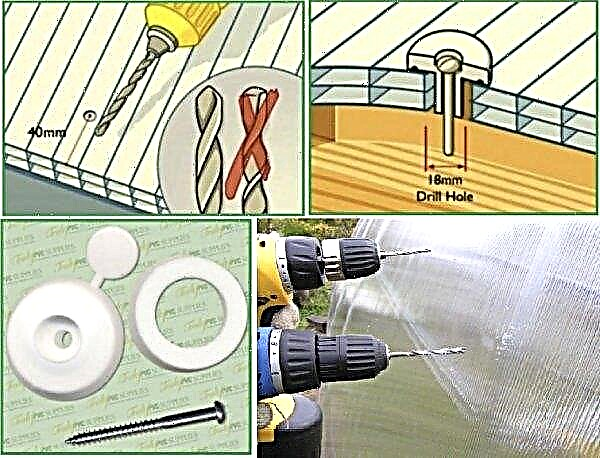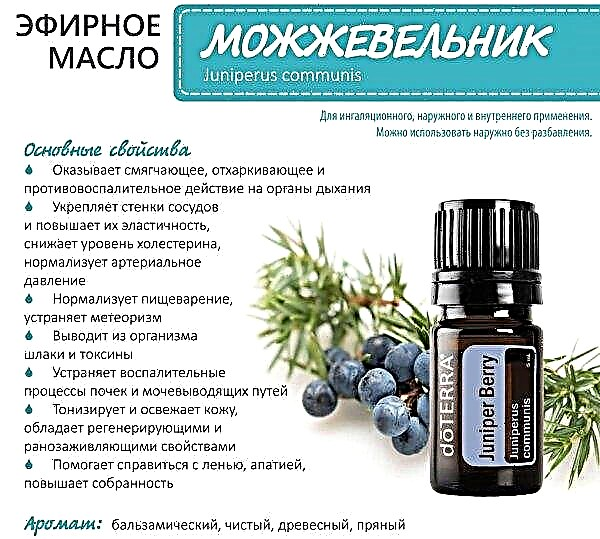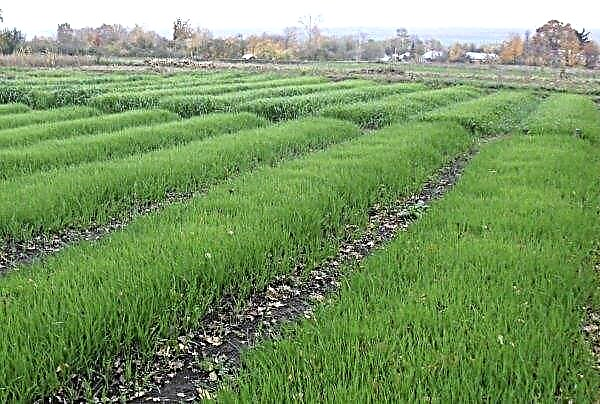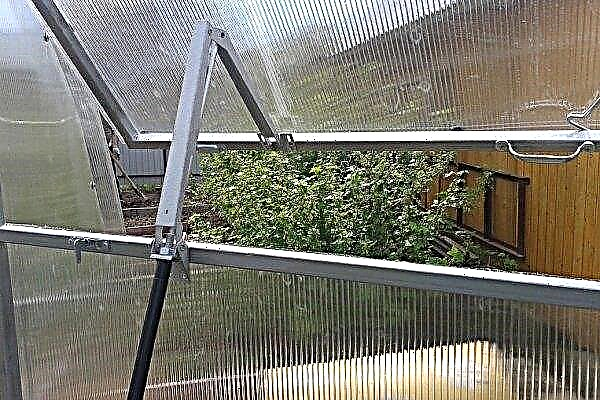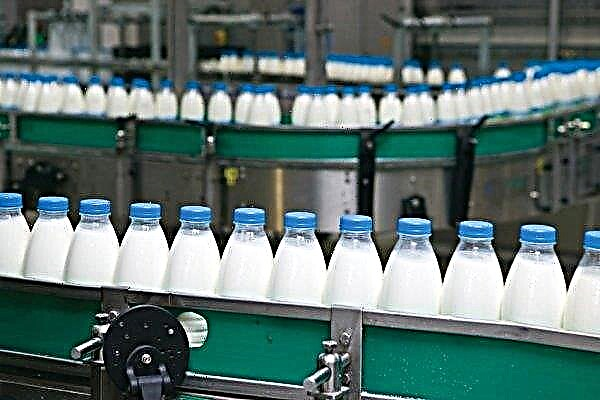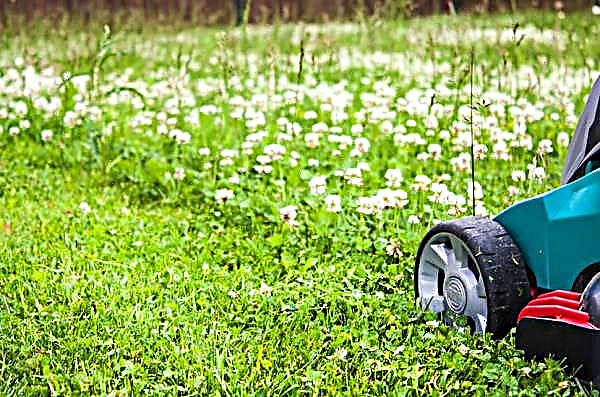Growing potatoes, hardly anyone seriously thinks about the structure of the tuber and its chemical properties, but it is advisable to know as much as possible about everything we eat. A simple-looking potato, fraught with many interesting facts, which you will now learn about.
What is a potato tuber?
The scientific and "common" definition of a tuber have significant differences, therefore, in order to come to the truth, it is worth comparing your own knowledge with the academic value of this concept.
Tuber definition
Potato tuber is a kind of vegetative thickening of the stem of the culture, which forms in the underground part of the plant. The stem located under the soil is usually called the “stolon”, and on the tubers themselves it is possible to distinguish nodes (eyes) and internodes.
Important! For growing potatoes, not only a whole planting material is perfect, but also cut half of the tubers, the main thing is that they have a sufficient number of viable eyes. To achieve the most abundant harvest, it is advisable to sprout potatoes before planting tubers in the soil, achieving the formation of new seedlings with a length of not less than 0.5 cm.
The structure of each such node includes a leaf trail, which in favorable conditions quickly grows and turns into a new stem, which in the future will represent the standard vegetative aerial part of the potato bush.
Internal and external structure
If the external structure of the tuber can be partially evaluated by visual inspection, then its internal elements, together with the main layers, will have to be examined under a microscope. It is he who allows you to see the epidermis, bark, cambium, core and vascular pinches of a vegetable, and also to find out what the underground part of the stem looks like in a section.
The epidermis (in mature tubers it is called the skin) is the uppermost, protective layer consisting of capped peridermal cells (another covering tissue). Immediately beneath this layer is the bark formed by parenchymal cells with starch grains and sieve-like phloem tubes (they are the leading elements of the bast).
Under the bark, you can see a layer of cambial cells, from which xylem elements depart to the central part of the tuber.
A large number of parenchymal core cells are concentrated in the central part of the potato, and the middle itself diverges towards them with radial rays. Parenchymal cells of the tuberous part contain starchy grains, the largest number of which are concentrated in the inner part of the cortex and the outer layers of the core.
The smallest of these elements is found in the watery cells of the central part of the core.
Biological features
The biological characteristics of the growth and development of potatoes are largely dependent on the variety of vegetables, but on average, the first crop can be harvested already in 80-150 days, after planting the planting material. All tubers begin their development from the lateral subsoil buds, which form at the base of the main stem. Under the most favorable conditions, at a certain moment, the extension of the stolon stops, and the cells inside its apical region expand first, and then begin their longitudinal division.
All tubers begin their development from the lateral subsoil buds, which form at the base of the main stem. Under the most favorable conditions, at a certain moment, the extension of the stolon stops, and the cells inside its apical region expand first, and then begin their longitudinal division.
All together, the described processes cause swelling of the subapical portion of the stolon, which externally manifests itself as a flowering plant (in rare cases, it is absent).
Growing in size, new potato tubers accumulate proteins and carbohydrates, mostly represented by starch. With their appearance, the metabolic activity inside the tuber decreases slightly, and it begins to play the role of a regular vessel for storing nutrients. On average, the proportion of starch inside a vegetable is at least 18% of its total fresh mass.
After the overhead shoots die off (the green color changes to brown, and then the vines completely dry), you can start harvesting, because the potato tubers have already solidified and the probability of damage to the fruit during harvesting has decreased as much as possible.
Important! If the peel on the surface of the potato is green, it means that it contains a large amount of solanine - a toxic substance that is harmful to humans. To prevent its accumulation in the tubers, it is worthwhile to hobble and mulch the bushes in a timely manner, thereby protecting the underground part of the plant from solar radiation.
Chemical composition and nutritional value
The chemical composition of the edible part of the potato largely depends on the variety of culture, the conditions for its growth, caring for the plant and the maturity of the tubers themselves. On average, in a percentage ratio, one potato contains:
On average, in a percentage ratio, one potato contains:
- 75% of water;
- 18% starch;
- 2% crude protein (nitrogenous substances);
- 1.5% sugars;
- 1% fiber
- 0.1% fat;
- 0.2% titratable acids;
- 0.1% phenolic compounds;
- 0.6: pectin components;
- 1.6% of organic compounds (in particular, nucleic acids, glycoalkaloids);
- 1.1% of minerals.
When storing the harvested crop, the amount of starch contained in the tubers decreases, which is explained by the hydrolytic decomposition of its sugars under the influence of low temperatures in the storage. In addition to the substances already mentioned, mature potato tubers are also useful for the human body with a high content of vitamins C, B1, B2, B6, K, PP.
As for the calorie content of cooked potatoes, 100 g of mashed potatoes contains about 66 kcal, and old tubers cooked in their skins are characterized by the presence of 78–80 kcal.
Did you know? The most expensive potato in the world is deservedly recognized as the variety La Bonnotte, grown on the island of Nurmuatie in France. For 1 kg of this product, according to various sources, they ask from 400 to 700 dollars.
How does a potato tuber develop
Taking into account the biological characteristics of potato fruits, it is possible to clearly determine all stages of its development. As you know, potatoes are formed by thickenings of rhizomes (underground stem part) that develop in the lower leaf sinuses, therefore, several main stages are distinguished in the life cycle of potatoes:
As you know, potatoes are formed by thickenings of rhizomes (underground stem part) that develop in the lower leaf sinuses, therefore, several main stages are distinguished in the life cycle of potatoes:
- Initiation and active growth of tubers.
- The rest period without significant changes in the characteristics of the main part of the plant.
- Germination, which, ultimately, leads to subsequent vegetative generation (under the influence of increased cellular metabolism, seedlings begin to appear from the eyes).
- After the germination of potatoes, the formation of all plant parts of the culture begins, photosynthesis occurs.
The formation of new tubers (future harvest) requires at least 30-60 days from the time of seed planting, after which, over the next 1-2 months, new fruits will grow and develop to a state of full maturity.
It is noteworthy that the formation of the underground parts of many varieties of potatoes ends when the soil warms up to a temperature of + 25 ... + 27 ° C.
Did you know? Contrary to popular belief, not all potatoes on Earth grow in the soil. In the tropical regions of our planet, there are plant species that grow from trees. There is even a 15-meter potato tree, but besides year-round flowering, it no longer pleases a person.
Why should a potato tuber be considered a modified shoot?
If you carefully study the botanical description of potatoes, then answering this question is not at all difficult. All underground shoots with forming tuberous thickenings in the apical part are a continuation of the aboveground stem, since they originate from its base. However, the tissues of tubers differ in many respects from the tissues of the aerial part; therefore, their vegetative origin is indicated by the presence of underdeveloped, scaly-like leaf plates on young potatoes. When they die off, they leave arcuate marks on the surface of the future crop, with 2-3 buds inside. Together with the eyebrows, such tracks form a notch.
However, the tissues of tubers differ in many respects from the tissues of the aerial part; therefore, their vegetative origin is indicated by the presence of underdeveloped, scaly-like leaf plates on young potatoes. When they die off, they leave arcuate marks on the surface of the future crop, with 2-3 buds inside. Together with the eyebrows, such tracks form a notch.
Additional evidence that the tuber can be considered as a modified shoot is its ability to change color when exposed to solar radiation. Despite the absence of chlorophyll in the potato fruits, they can turn green no worse than foliage and the aerial part of the stem.
Pests and diseases
Despite the variety of potatoes in front of you, it probably consists of a standard set of tissues, slightly differing in their structure. True, it is these differences that often affect the plant's resistance to a variety of vegetable ailments and pests, so it is impossible to completely eliminate the likelihood of problems.
The most common causes of impaired cultural development are:
- Late blight - A disease caused by the mycelial microorganism Phytophthora infestans, which quickly spreads in the tissues of leaf plates and the tubers themselves. The pathogen has long been preserved in plant debris from last season and has successfully hibernated in the soil, therefore, to prevent infection of the crop, do not leave garbage in the garden, and it is better to dig the soil before frost. With severe infection, fungicidal compounds cannot be dispensed with, which means you should pay attention to modern drugs like “Acidan”, “Tattu”, “Bordeaux mixture”, which can be purchased at any gardening store.
- Sporangia. This ailment is often caused by exposure to a plant of asexual microscopic spores, which under favorable conditions move very quickly through air or water. When they fall on the leaves of a potato, they release zoospores, and they, in turn, send an embryonic tube to the tissue of the green part of the plant. Externally, the presence of the problem is noticeable in brown spots that form on different parts of the leaves. Over time, such sites stretch and lead to activation of putrefactive processes in the epidermis of the plant.
- Scab (ordinary and silver). In the first case, the development of the problem causes the pathogenic microorganism Streptomyces scabies, and in the second, the plant suffers from Helminthosporium solani. The first signs of disease are the appearance on the plant of brown spots of irregular shape and the formation of light brown patches on the tubers themselves, which quickly change the permeability of the skin and disrupt moisture exchange. The taste of the affected potato may not differ from the properties of healthy specimens, but the quality of the fruit will still be reduced (usually the infected plant slows growth and grow smaller tubers). The ideal conditions for the active development of the disease will be increased air humidity amid high ambient temperatures.
- Oosporosis (tuberous scab) - another fungal disease of potato, the causative agent of which in this case is the fungus Polyscytalum pustulans. It changes the state of the eye on the surface of the tubers and appears in the form of rounded pustules, the color of which practically does not differ from the color of the main surface of healthy potatoes. As in previous cases, timely preventive measures (for example, crop rotation and timely soil care) and the use of fungicides will help to cope with the problem.




Of the pests, Colorado potato beetle, fluoridea (also called potato moth), nematodes and large aphids, whose presence can be seen by the deterioration of the green mass of the crop, are considered to be especially dangerous for potato plantations. In addition, no less harm is brought to her by slugs that tunnel through the fruits and cause them to rot.
Pests can be controlled by regular manual collection of adult individuals and larvae, as well as with the help of special insecticides, such as Bombardir, Calypso, Karate Zeon.
Having carefully studied the features of the structure, growth and development of potato tubers, as well as paying attention to the requirements for growing crops, you can significantly reduce the likelihood of developing any of these problems, and all that remains is to enjoy delicious and nutritious potato fruits.

